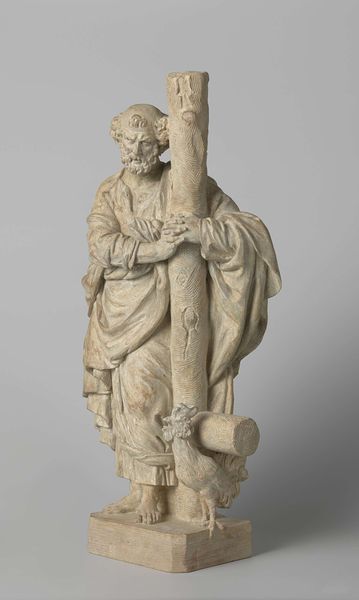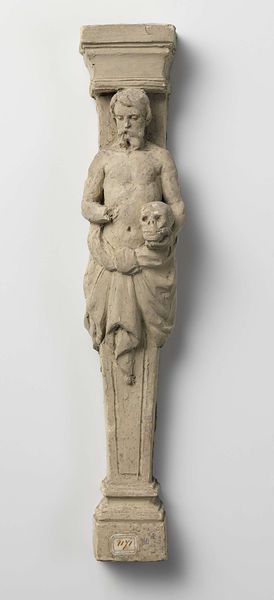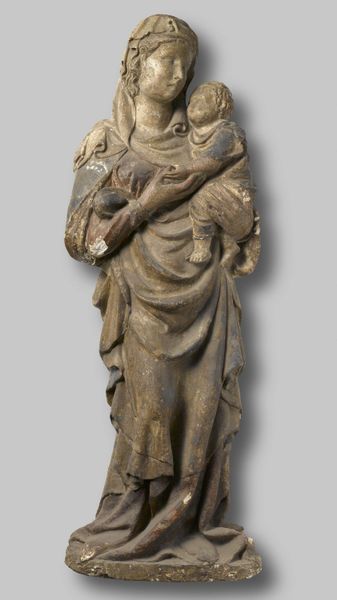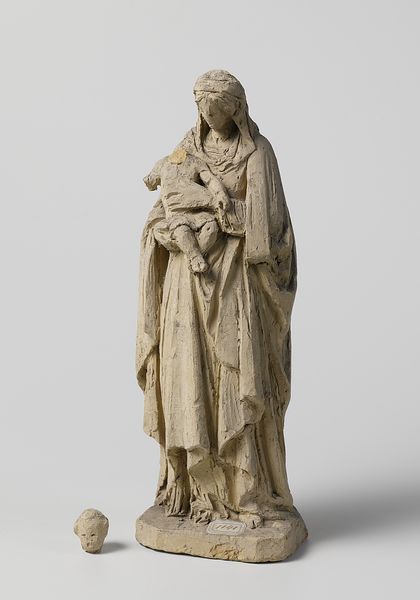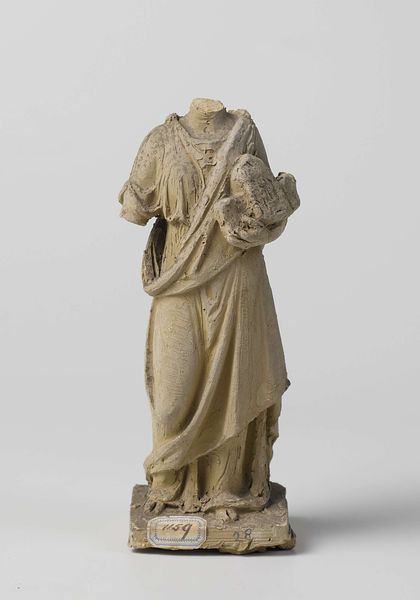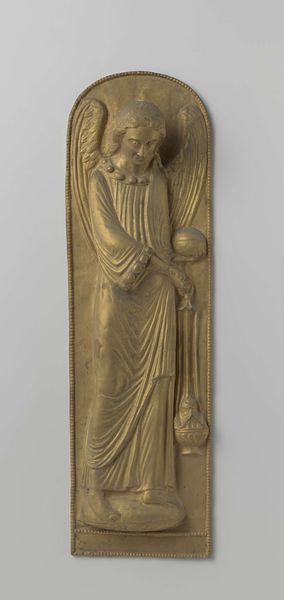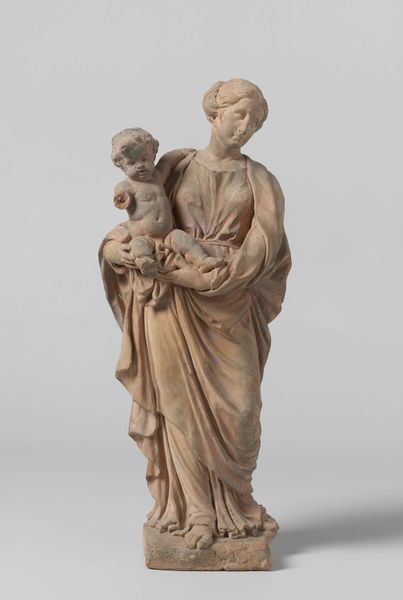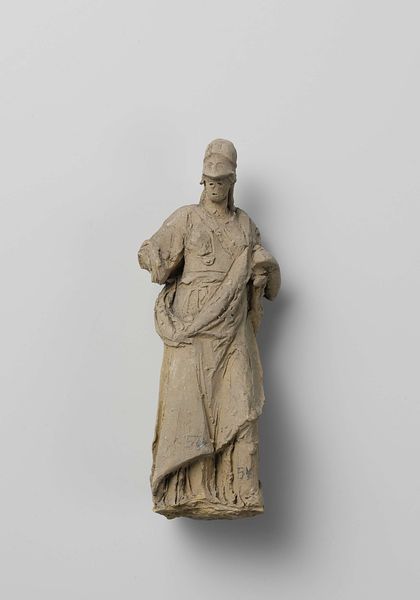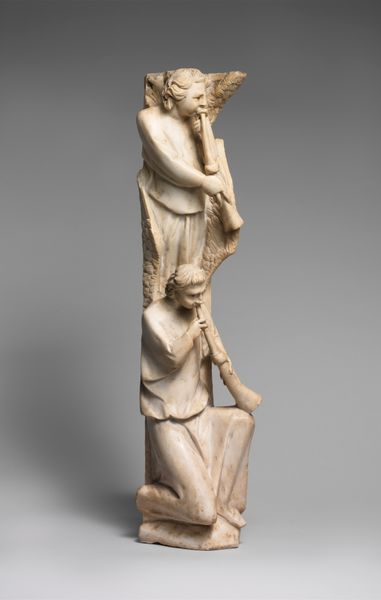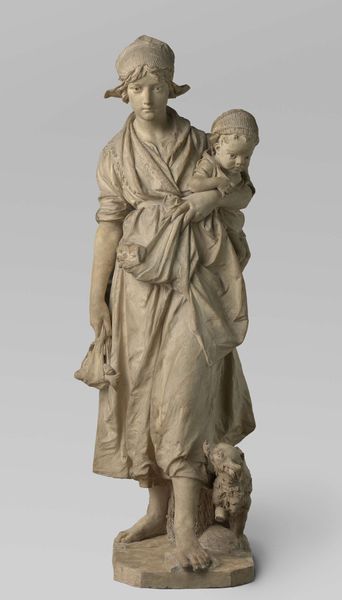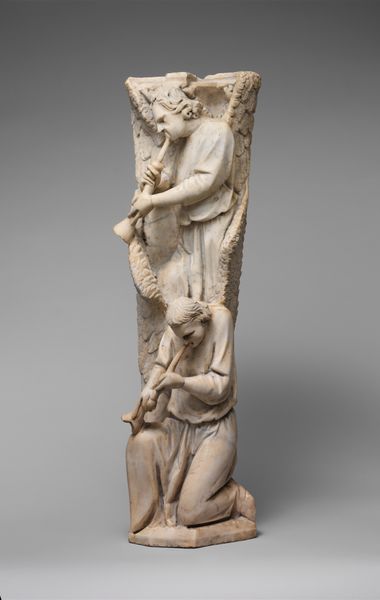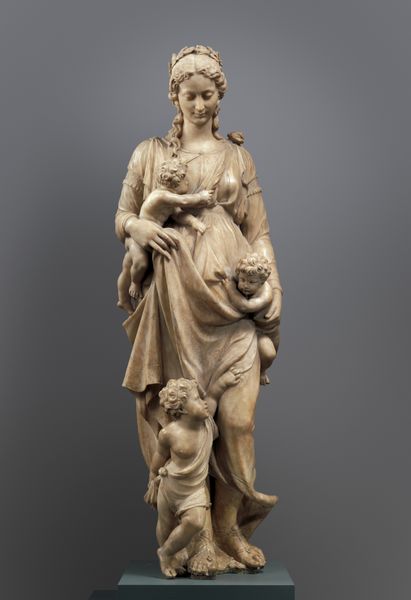
sculpture
#
portrait
#
neoclacissism
#
stone
#
sculpture
#
figuration
#
sculpture
Dimensions: height 24 cm, width 11.9 cm, depth 8.9 cm
Copyright: Rijks Museum: Open Domain
This is a plaster sculpture of St. Vincentius van Paolo, created by Eugène Lacomblé. Plaster is an interesting material, really neither high nor low, neither craft nor art. It’s a humble material, easily cast and molded, but it can also take on a monumental quality. Here, the plaster is left unpainted, emphasizing its raw texture. You can see the tool marks and subtle imperfections in the surface. Lacomblé likely chose plaster for its affordability and its ability to capture fine details. The process of casting allowed him to replicate the figure efficiently, perhaps for a wider audience. Yet, the material itself speaks to the social context of the sculpture: St. Vincentius was known for his work with the poor and marginalized, and the use of plaster, a common material, connects the sculpture to a sense of accessibility. It makes you wonder, was this sculpture aimed at a wealthy patron, or a broader public? Considering the material helps us to consider the social impact of the work itself, erasing boundaries between fine art and its worldly applications.
Comments
No comments
Be the first to comment and join the conversation on the ultimate creative platform.

